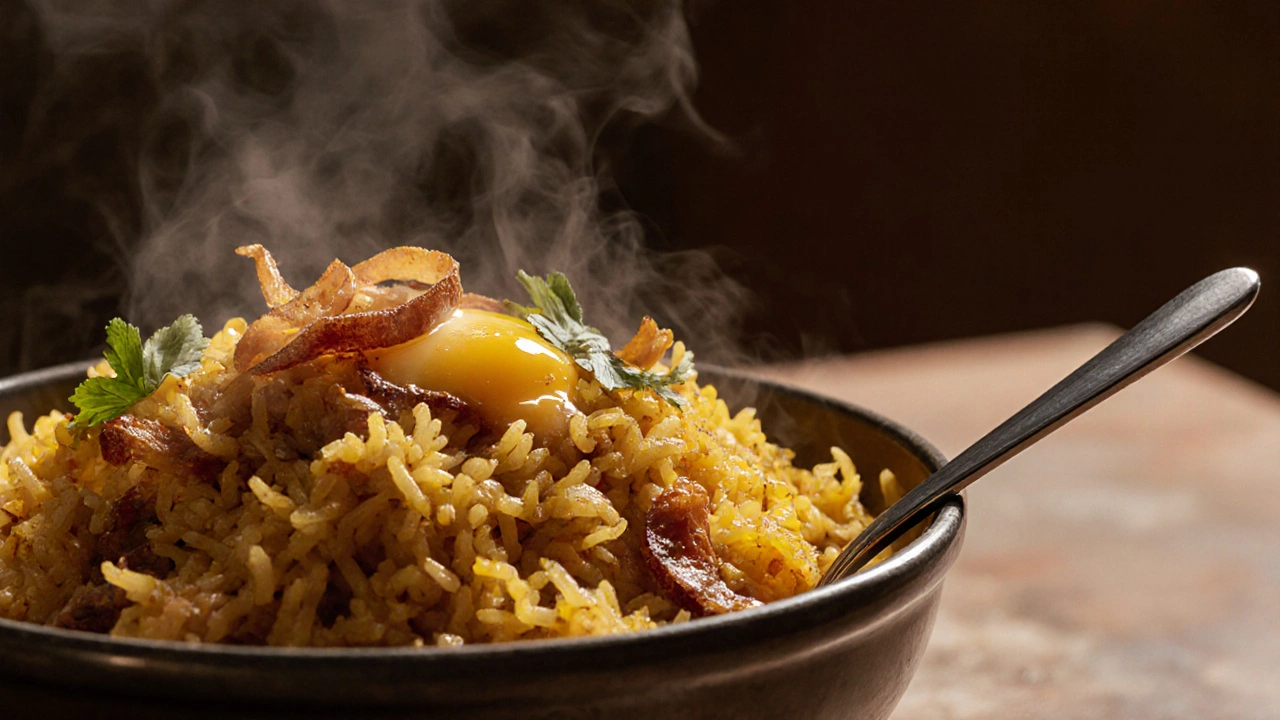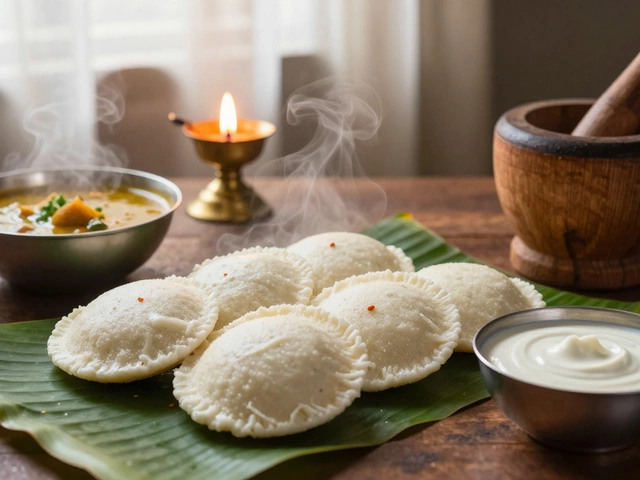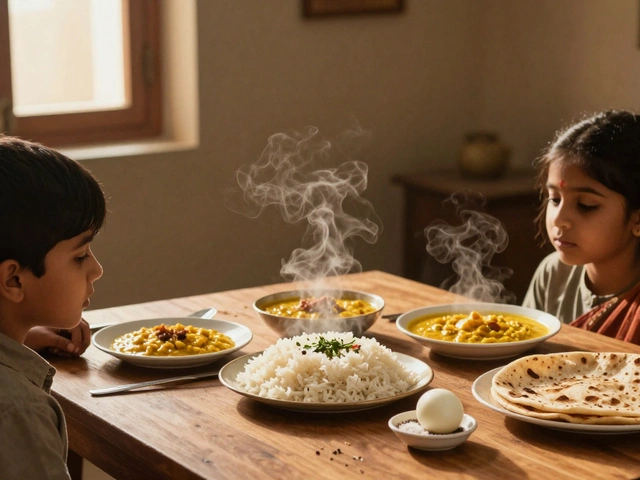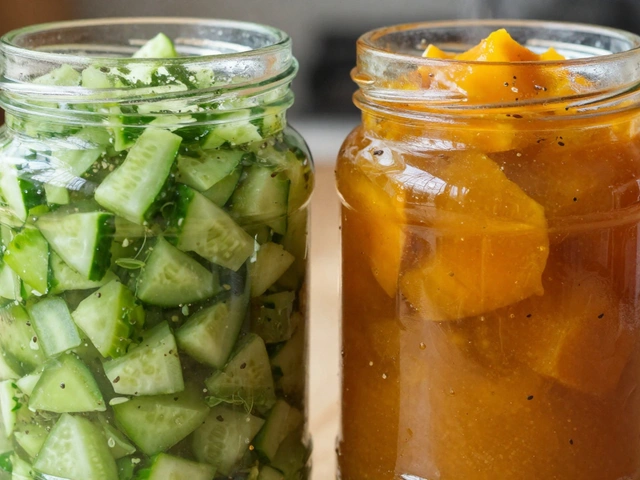Biryani Accompaniment Calculator
Find the perfect accompaniments to complement your biryani. Based on the article's guidance, we'll recommend the best pairings for your taste.
Your Recommended Accompaniments
Pro Tip: As mentioned in the article, serve raita at room temperature for the best flavor contrast with biryani. Avoid cold accompaniments which can dull the spices.
How to Enjoy:
Ever wondered why some people seem to get the most out of that aromatic bowl of biryani while others just end up with a bland bite? The secret isn’t just in the recipe; it’s in the way you eat it. Below you’ll find a step‑by‑step guide that turns every forkful (or finger‑ful) into a flavor‑packed moment.
What is Biryani?
Biryani is a layered rice dish that originated in the Indian subcontinent, combining long‑grain basmati rice with spiced meat, vegetables, or paneer, and often finished with saffron, ghee, and fried onions. Its name comes from the Persian word “birinj” meaning rice, and it has become a staple for celebrations across South Asia.
Understanding Biryani’s Layers
The magic of biryani lies in its layers. First, the Basmati rice a fragrant, extra‑long grain rice known for its fluffy texture and distinct aroma absorbs the spice‑infused juices from the meat or vegetables. Below that, you’ll find the cooked protein or veggies, which are marinated in yogurt, ginger‑garlic paste, and a blend of spices like garam masala, turmeric, and red chili powder. The topmost layer often carries a garnish of fried onions, fresh herbs, and a drizzle of Ghee clarified butter that adds richness and a glossy finish. Understanding this structure helps you know which part to pick first for maximum taste.
Choosing the Right Utensils
While many enjoy biryani with a spoon, traditional dining often involves a wide, shallow hand (a stainless steel or copper ‘handi’ spoon) or a sturdy metal fork. If you’re at a formal setting, a long‑handled serving spoon works best to lift the top layers without crushing the delicate rice. For home meals, a wooden spoon won’t affect the flavor and feels cozy. The key is to avoid a thin ladle that can mash the rice into mush.
How to Portion and Serve
- Start from the top. Use your spoon or fork to scoop the topmost layer of rice mixed with the saffron‑colored garnish. This ensures you get the most aromatic saffron and the buttery ghee.
- Mix gently. As you bring the first bite to the plate, lightly stir the rice and meat together. This distributes the spices evenly without over‑mixing.
- Mind the portion size. A typical serving is about 1½ cups of cooked biryani per person. Reserve a small mound for the side accompaniments - they’re meant to complement, not overwhelm.
When serving a crowd, keep the pot uncovered for a few minutes after cooking. This lets the steam escape and prevents the rice from becoming soggy.

Classic Accompaniments that Enhance Flavor
Pairing the right sides can elevate your Raita a cooling yogurt‑based sauce mixed with cucumber, mint, and spices and other condiments.
- Mint‑Cilantro Raita: Yogurt blended with finely chopped mint, cilantro, a pinch of roasted cumin, and a dash of salt. The fresh herbs cut through the heat of biryani.
- Onion Salad: Thinly sliced red onions soaked in lemon juice, with a sprinkle of chaat masala.
- Pickled Chilies: For those who love extra heat, a small spoonful of pickled green chilies adds a punch.
- Lemon Wedges: A squeeze of lemon brightens the flavors and balances the richness of ghee.
These sides are usually served on the same platter or in small bowls beside the biryani. The goal is to balance richness with acidity and freshness.
Eating Etiquette: Hand vs Fork
In many South Asian households, eating biryani with the right hand (the hand without a ring) is customary. The fingertips are used to scoop the rice, while the thumb gently pushes the bite into the mouth. This method is believed to keep the flavors intact and respects cultural norms. If you’re uncomfortable using your hands, a metal fork works fine - just be mindful to scoop from the side, not to press down the rice.
Modern Twists Without Losing Authenticity
While purists may shun shortcuts, a few modern hacks can make eating biryani easier without sacrificing taste:
- Individual Portion Cups: Serve biryani in small, reusable bowls. This prevents over‑mixing the layers on a large platter.
- Pre‑Portioned Raita Packs: Keep a small sealed container of raita at each seat - a tidy way to keep the yogurt sauce fresh.
- Microwave‑Safe Portioning: If leftovers are stored, reheat a single serving in a microwave‑safe dish, covering it with a damp paper towel to retain moisture.
These adaptations are especially handy for office lunches or picnics where you need a clean, mess‑free experience.

Common Mistakes to Avoid
Even with the best biryani, a few common errors can ruin the eating experience:
- Skipping the Garnish: Saffron and fried onions aren’t just for looks; they add depth to each bite.
- Using Too Much Sauce: Over‑drowning the rice in raita or curry can mask the spices.
- Mixing Too Early: Wait a minute after serving to let the steam settle. Mixing right away can make the rice soggy.
- Cold Accompaniments: Always serve raita, salads, and lemon at room temperature for balanced contrast.
By steering clear of these pitfalls, you’ll enjoy the full spectrum of flavors the dish offers.
Quick Reference: Traditional vs Modern Serving Styles
| Aspect | Traditional | Modern |
|---|---|---|
| Utensil | Handi spoon or metal fork | Portion cup & fork |
| Accompaniment | Raita, onion salad, lemon | Pre‑packed raita, single‑serve lemon wedges |
| Portion size | Family‑style large serving | Individual bowls |
| Mixing | Gentle stir after the first scoop | Pre‑mixed in container |
| Heating leftovers | Stove‑top reheating with water splash | Microwave with damp towel |
Mini FAQ
Should I eat biryani with a spoon or fork?
Both work fine. A wide spoon or a sturdy fork helps keep the rice fluffy. If you’re comfortable, using your right hand is the most authentic method.
Is it okay to add extra ghee after serving?
Absolutely. A drizzle of warm ghee right before you eat adds an extra layer of richness and aroma.
What’s the best accompaniment for spicy biryani?
A cooling mint‑coriander raita works wonders. The yogurt’s tartness balances the heat, and the herbs add freshness.
Can I eat biryani the next day?
Yes. Store it in an airtight container in the fridge for up to three days. Reheat gently, adding a splash of water to keep the rice from drying out.
Is it necessary to use saffron?
Saffron gives the signature golden hue and subtle flavor. If it’s unavailable, a pinch of turmeric with a dash of rose water can mimic the color and aroma.
Now you have a clear roadmap to eat biryani the right way - from picking the perfect spoon to pairing the ideal raita. Next time you sit down with a steaming plate, you’ll enjoy every fragrant grain and spice, just as the dish was meant to be savored.




